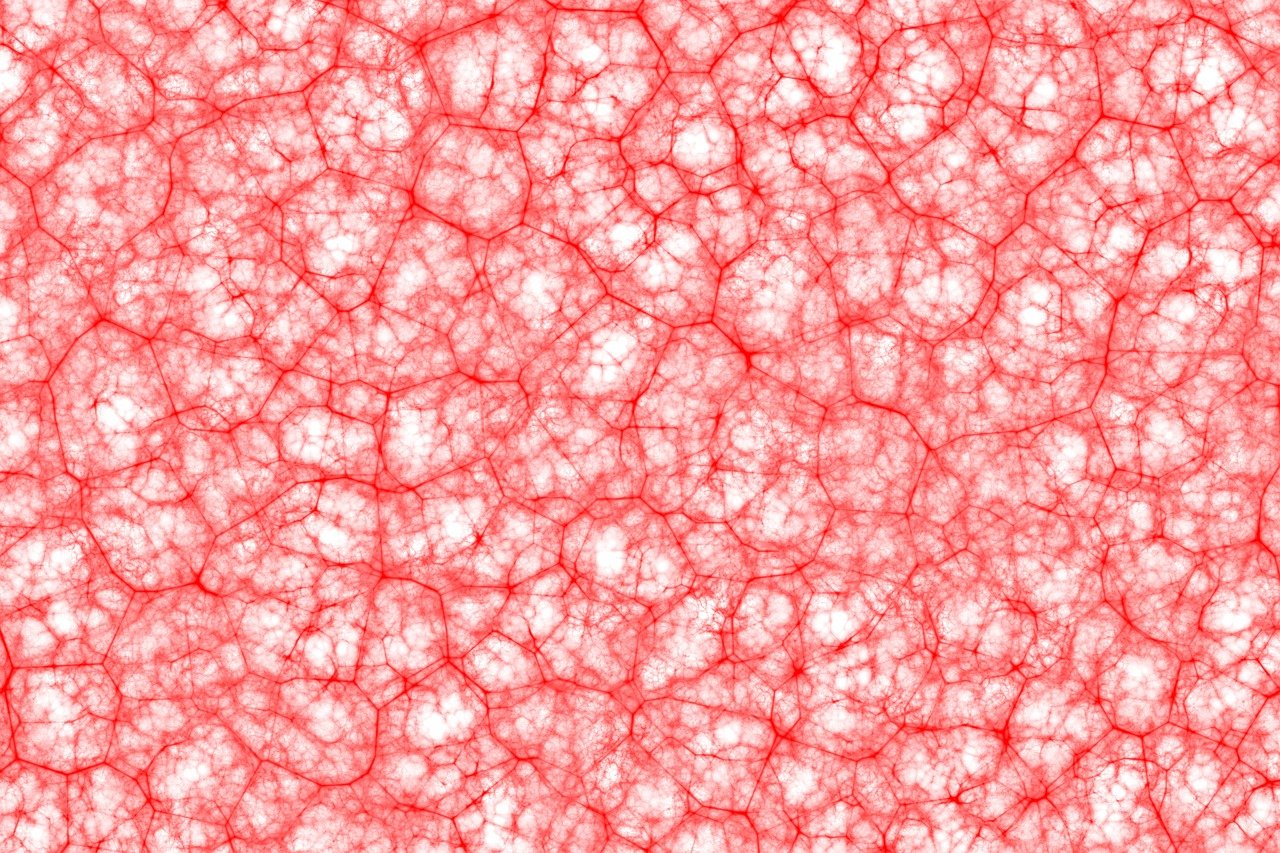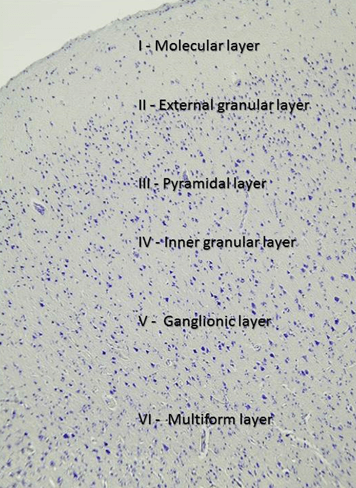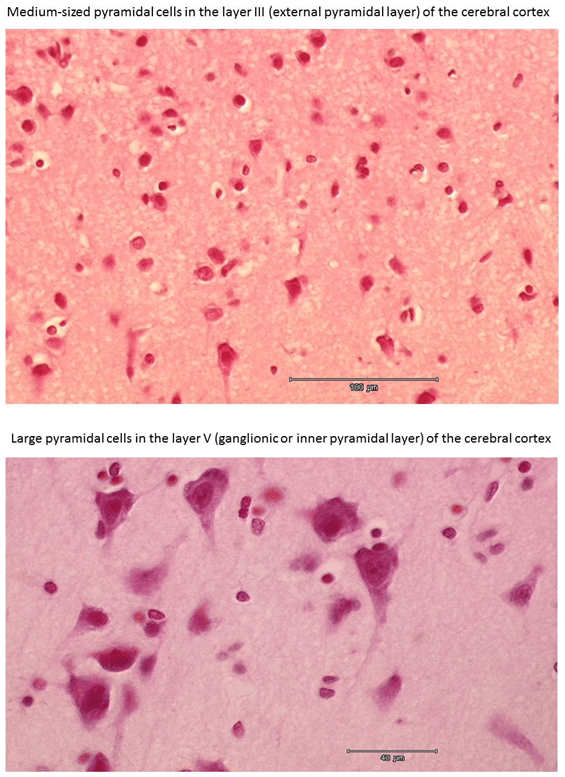
Morphology of Nervous System
The cerebral cortex
The cerebral hemispheres consist of a convoluted cortex of gray matter (thickness around 3 mm, total surface area 1.2-2.6 m2) overlying the central medullary mass of white matter, which conveys fibers between different parts of the cortex and from other parts of central nervous system. The surface area of the cortex is increased by its convolutions, which are separated by fissures. The cerebral cortex consists of neurons, nerve fibers and neuroglia.
The cerebral cortex (neocortex) consists of six layers (in human the primitive arrangement into three layers persists only in the olfactory cortex and the cortical part of the limbic system in the temporal lobe). Most of the neurons in the cerebral cortex are arranged vertically and most abundant neurons are the efferent pyramidal cells (very large giant pyramidal cells found in the layer V of the regions of the motor cortex are called Betz cells).
The six layers of the cerebral cortex are:
- I. Molecular layer (lamina molecularis) – consists only a few nerve cells
- II. External granular layer (lamina granularis externa) – relatively thin layer consisting of numerous small, densely packed neurons
- III. Pyramidal layer or external pyramidal layer (lamina pyramidalis externa) – is composed of medium-sized pyramidal nerve cells
- IV. Inner granular layer (lamina granularis interna) – contains small, irregularily shaped nerve cells
- V. Ganglionic or inner pyramidal layer (lamina pyramidalis interna) – includes large pyramidal cells
- VI. Multiform layer (lamina multiformis) – small polymorphic and fusiform nerve cells




